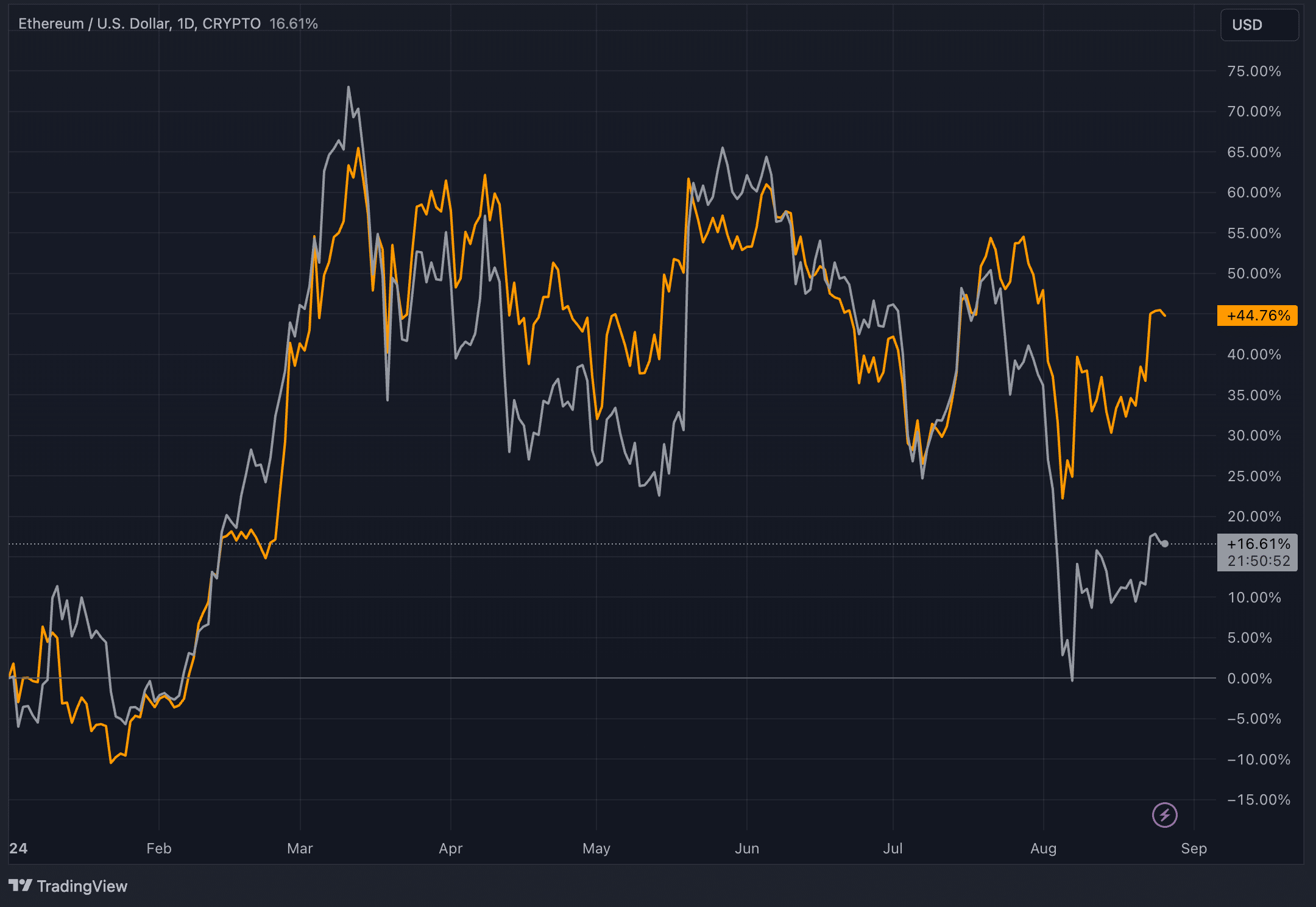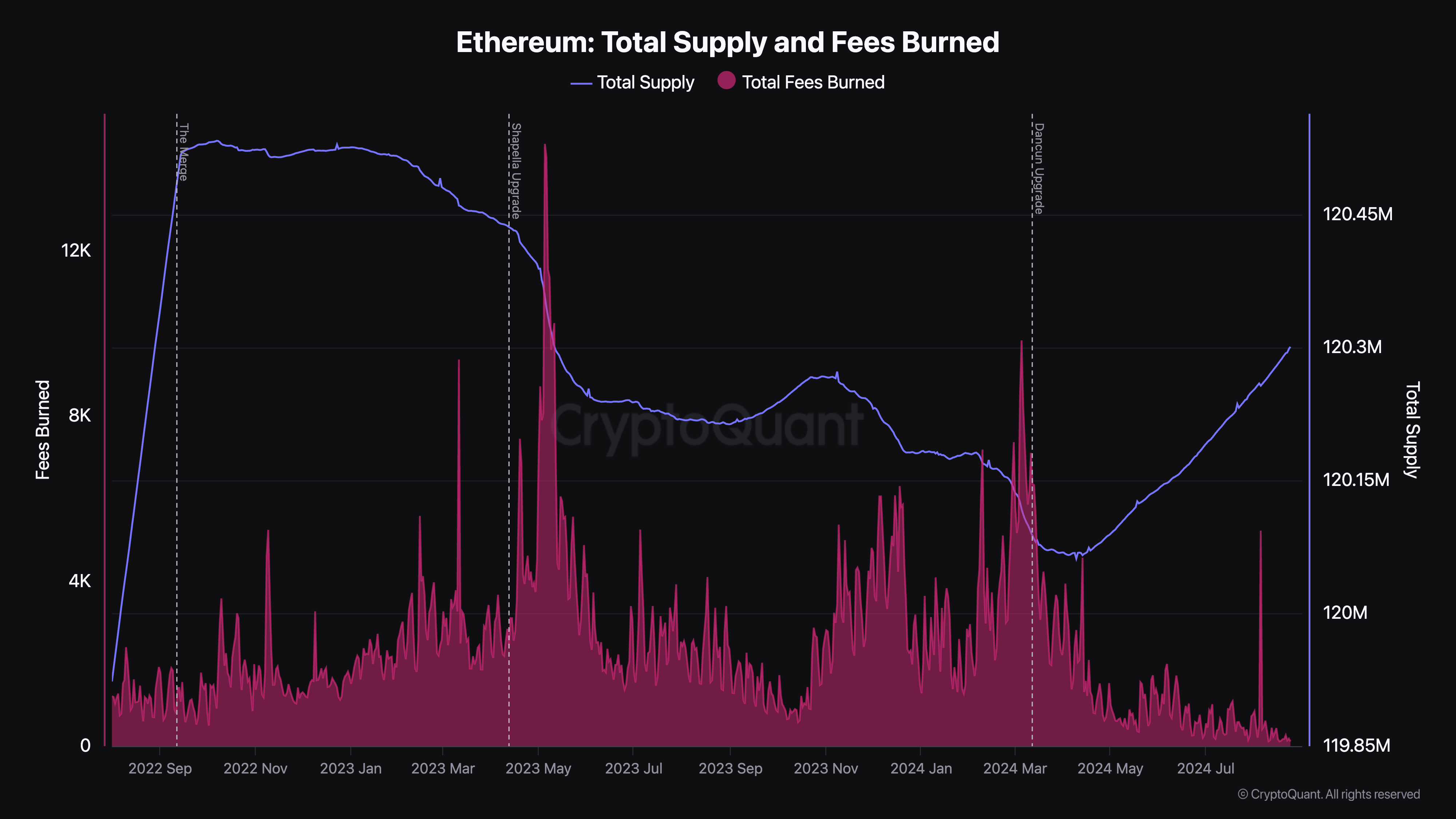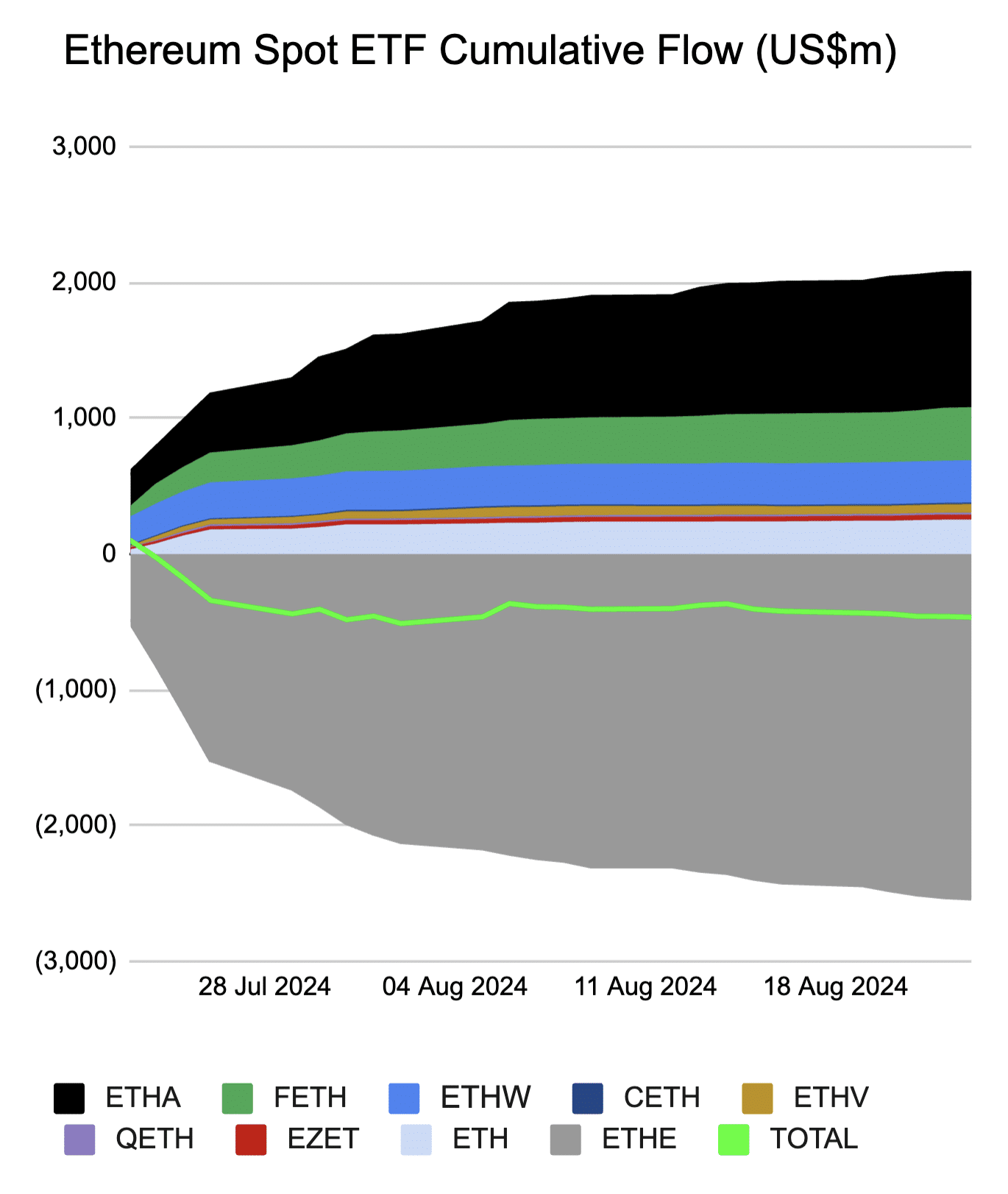Can Ethereum regain momentum and outperform Bitcoin in 2024?
Ethereum has outperformed Bitcoin in terms of price performance, especially when looking at time frames since its inception, halving years, and bull market periods. However, ETH has consistently underperformed since the bear markets of 2018-2019 and 2022-2023. In the 2024 halving year, for the first time, Ethereum is considerably trailing behind Bitcoin. In fact, it has been underperforming against Bitcoin for the past three years.

Table of Contents
ETH/BTC ratio plummets to 3.5-year low
Although fractals, a concept where similar patterns repeat over different timeframes, are not a foolproof method for predicting future outcomes, they provide valuable context into what might lie ahead.

In previous halving years, the ETH/BTC ratio broke down from its support line around September to December, only to begin an uptrend in the first quarter of the following bull market year. A similar scenario could unfold in 2024, as Ethereum has once again broken through its support. However, this time, the situation is more concerning. Unlike previous halving years, where the support line was relatively recent, the current support at 0.05 has held strong for the past 3.5 years, which suggests a more bearish outlook for Ethereum.
Another point of comparison can be drawn from 2019 when the Federal Reserve started cutting interest rates—a move that might recur in September 2024. Back in 2019, from the time the Fed began cutting rates until it stopped, the ETH/BTC ratio dropped by 22%.

Not only did the ratio drop in all these cases, but Ethereum’s price itself also performed negatively, except for 2020. However, the critical issue isn’t just whether the price went up or down; it is also whether holding Ethereum was the better investment decision. History has shown that, in similar circumstances, holding Bitcoin proved to be the more advantageous choice—and 2024 may very well continue that trend.
Ethereum supply reverses course and turns inflationary.
The supply of Ethereum had been decreasing steadily after the 2022 Merge. The decrease in Ethereum’s supply works through a mechanism called “burning,” which was introduced with the Ethereum Improvement Proposal (EIP) 1559 in August 2021. Basically, a portion of the transaction fees paid in ETH is burned or permanently removed from circulation. This reduces the total supply of ETH over time, especially during periods of high network activity when transaction fees are higher.
The reason why the supply of Ethereum started to drop following the 2022 Merge was because the network transitioned from a proof-of-work to a proof-of-stake consensus mechanism. Under PoW, new ETH was continuously issued to miners as rewards for validating transactions, which contributed to an increase in Ethereum’s total supply. However, with the Merge and the shift to PoS, the issuance of new ETH significantly decreased because validators, who now secure the network, receive much lower rewards compared to miners.
The Dencun upgrade in March 2024 marked a turning point, reversing this deflationary trend and making Ethereum’s supply inflationary once again. It introduced proto-danksharding and “blobs,” which optimize data storage and reduce transaction fees on layer-2 networks. Although Dencun improved scalability and made transactions more cost-effective, it also led to a major decrease in the amount of ETH being burned, which had been a critical factor in keeping Ethereum’s supply deflationary.

As a consequence, Ethereum’s supply began to increase, with over 213.5K ETH added to circulation since the Dencun upgrade. For comparison, Ethereum’s supply is now at the same level it was back in May 2023.
Negative ETF Flows Continue
Many expected that the approval of Ethereum ETFs would boost ETH by increasing demand and driving prices higher. However, this has not been the case so far. Instead, ETF outflows have become a concern, with a total of $465 million flowing out since trading began. The main driver of the trend is Grayscale’s ETHE, which has seen massive outflows, overshadowing the positive inflows from other Ethereum ETFs. The scale of the outflows from ETHE is so large that it creates a net negative effect when considering all Ethereum ETFs collectively.

An Ethereum ETF holds a certain amount of Ethereum, and each share represents a fraction of the total Ethereum it holds. When many investors want to buy ETF shares, the demand can push the price of the ETF shares above the actual value of the underlying Ethereum. In this case, Authorized Participants (APs), large financial institutions that work closely with the ETF provider, step in. The APs purchase ETH on the open market and exchange it with the ETF provider for new ETF shares, which they then sell to investors in the market at a higher price, making a profit. The process increases the supply of ETF shares, which helps bring the share price back in line with the value of the underlying assets.
Conversely, when there is low demand for the ETF, the price of its shares might fall below the value of the underlying Ethereum. Here, APs buy the undervalued ETF shares from the market, return them to the ETF provider, and receive Ethereum in exchange. They can then sell Ethereum on the open market at a higher price, profiting from the arbitrage. This reduces the supply of ETF shares and helps the price align more closely with the value of the underlying Ethereum.
Simply put, the ETH selling from APs as they redeem ETF shares could be one of the reasons why ETH’s price is down and struggling to recover.
Conclusion
While current data might suggest a bearish outlook for Ethereum, it remains a fundamentally strong asset. The number of active addresses on both its main chain and Layer 2 networks continues to increase. Ethereum still leads the blockchain industry, holding the top spot in total value locked (TVL) across DeFi platforms, with many projects being developed on its ecosystem. Furthermore, Ethereum continues to see regular development and upgrades.
However, given the current market conditions and the ongoing ETF outflows, Ethereum may not be the best investment in the short term, particularly through the rest of 2024. Yet, as we look forward to 2025, starting in Q1, Ethereum is likely to regain its momentum and could once again outperform Bitcoin in terms of returns, much like it has in previous market cycles.
Disclosure: This article does not represent investment advice. The content and materials featured on this page are for educational purposes only.




